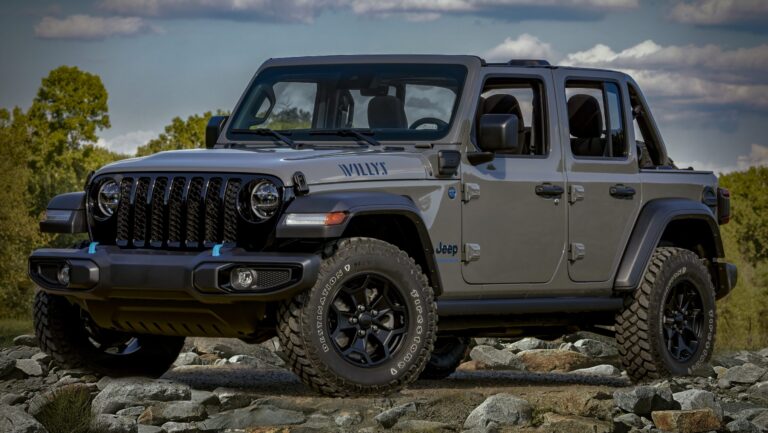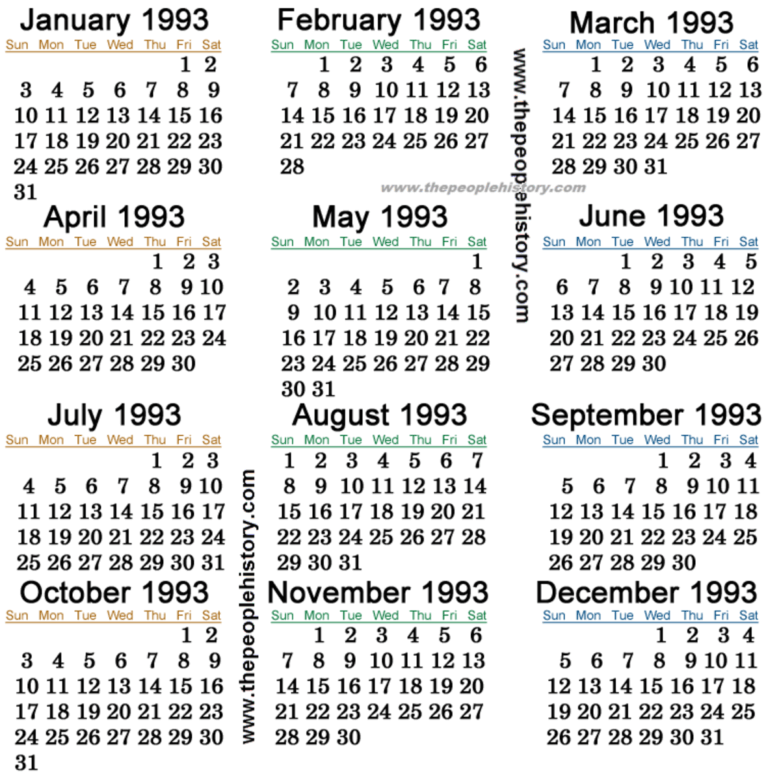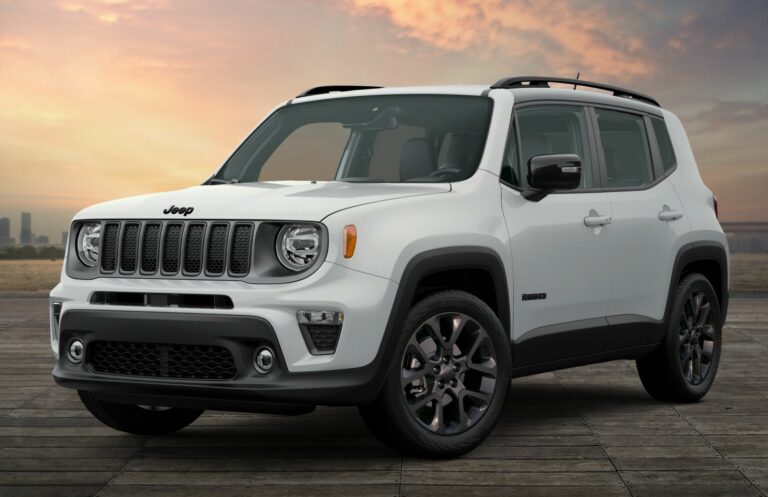2000 Jeep Hardtop For Sale: Your Comprehensive Buying Guide
2000 Jeep Hardtop For Sale: Your Comprehensive Buying Guide jeeps.truckstrend.com
The allure of a Jeep is undeniable, a symbol of freedom, adventure, and rugged capability. Among the pantheon of iconic Jeeps, the 2000 model year, particularly the Wrangler TJ with its robust hardtop, holds a special place in the hearts of enthusiasts and practical drivers alike. Far from being just another used vehicle, a 2000 Jeep Hardtop For Sale represents an opportunity to own a piece of automotive history that continues to deliver reliable performance, unparalleled off-road prowess, and a canvas for endless customization. This guide aims to be your definitive resource, navigating the nuances of finding, evaluating, and ultimately acquiring your ideal 2000 Jeep Hardtop.
The Enduring Appeal of the 2000 Jeep Wrangler TJ (with a Hardtop)
2000 Jeep Hardtop For Sale: Your Comprehensive Buying Guide
The 2000 Jeep Wrangler falls within the TJ generation (1997-2006), a period widely regarded as the sweet spot for many Jeep aficionados. The TJ blended the classic, utilitarian styling of its predecessors with modern coil-spring suspension, offering a significantly improved ride quality both on and off the pavement without sacrificing its legendary articulation and ground clearance.
For the 2000 model year, the Wrangler TJ typically came with two engine options: the highly coveted 4.0-liter inline-six cylinder (I6) engine, renowned for its bulletproof reliability, ample torque, and longevity, and the more economical 2.5-liter inline-four cylinder (I4) engine. Both were paired with either a manual or automatic transmission.
The inclusion of a hardtop is a significant advantage for many buyers. While the soft top offers the ultimate open-air experience, a hardtop provides superior:
- Security: A solid, lockable top offers much better protection against theft and vandalism compared to fabric.
- Insulation: Hardtops provide better thermal insulation, keeping the cabin warmer in winter and cooler in summer.
- Noise Reduction: Significantly reduces road and wind noise, making highway driving more comfortable.
- Weather Protection: Offers a more robust barrier against severe weather, including heavy rain, snow, and hail.
- Durability: Less prone to wear and tear, rips, or fading compared to a soft top.

Finding a 2000 Jeep Hardtop For Sale often means securing a vehicle that is not only a capable off-roader but also a more practical daily driver, especially in climates with diverse weather conditions.
What to Look For When Buying a 2000 Jeep Hardtop For Sale
Acquiring a 23-year-old vehicle, even one as robust as a Jeep TJ, requires careful inspection. Here’s a comprehensive checklist to guide your evaluation:

Critical Structural and Body Inspection: Rust is the Enemy
This cannot be stressed enough. Rust is the single biggest determinant of a TJ’s health and value.
- Frame: Inspect the entire frame meticulously, especially around the control arm mounts, skid plate mounts, and the rear sections near the bumper and gas tank. Look for flaking, bubbling, or soft spots that indicate severe rust. Tap with a hammer gently; a dull thud might indicate rot.
- Body: Check the rocker panels (beneath the doors), floorboards (under the carpet), inner fenders, and around the wheel wells. Small surface rust is common, but through-rust or significant perforation is a major red flag.
- Tub: Look under the carpet for rust, particularly in the footwells and cargo area.

Mechanical Condition
- Engine (4.0L I6 vs. 2.5L I4):
- 4.0L: Listen for unusual noises (knocks, ticks), check for oil leaks (rear main seal is common but expensive), examine the condition of the coolant and oil. Look for signs of overheating.
- 2.5L: Generally reliable but less powerful. Check similar points as the 4.0L.
- General: Check the exhaust for excessive smoke (blue for oil, white for coolant, black for rich fuel mix).
- Transmission:
- Manual: Test all gears, including reverse. Shifting should be smooth, not notchy or difficult. Listen for grinding.
- Automatic: Check fluid levels (should be red and not smell burnt). Shifting should be smooth, without harsh jerks or slipping.
- Drivetrain:
- Transfer Case: Ensure it shifts into 4-high and 4-low smoothly. Listen for clunks or grinding. Check for leaks.
- Axles: Check for leaks at the differential covers and axle seals. Listen for humming or whining noises, especially at speed, which could indicate worn gears or bearings.
- U-joints: Inspect drive shaft U-joints for play.
- Suspension & Steering:
- Look for worn bushings on control arms, sway bars, and track bars.
- Check ball joints and tie rod ends for play.
- Test drive for "death wobble" – a violent, uncontrollable shaking of the steering wheel at certain speeds, often caused by worn steering components.
- Examine shocks for leaks.
- Brakes: Check pad and rotor thickness. Ensure the parking brake works. Test for pulsation during braking.
Hardtop Condition
- Cracks & Leaks: Inspect the hardtop itself for cracks, especially around the mounting points and windows. Check all seals for dryness, cracking, or signs of leaks.
- Windows: Ensure the rear window opens smoothly. Check the rear wiper and defroster if equipped.
Interior and Electrical
- Seats & Carpet: Check for rips, stains, and overall wear.
- HVAC: Test heating and air conditioning functionality.
- Gauges & Lights: Ensure all dashboard gauges work correctly. Test all exterior and interior lights.
- Windows & Locks: Test power windows (if equipped) and door locks.
Modifications
Many TJs are modified. Assess the quality of modifications:
- Lift Kits: Were they installed professionally? Are the correct components (e.g., adjustable control arms, longer brake lines) used? Poorly installed lifts can lead to handling issues.
- Tires: Are they excessively large? Do they rub?
- Aftermarket Bumpers/Armor: Check for solid mounting and rust around mounting points.
Navigating the Market: Where to Find a 2000 Jeep Hardtop For Sale
Finding the right 2000 Jeep Hardtop requires patience and a multi-pronged approach:
- Online Marketplaces:
- Dedicated Forums & Groups: Websites like WranglerForum.com, JeepForum.com, and various Facebook groups (e.g., "Jeep TJ Owners," "Jeep TJs For Sale") often have classified sections where enthusiasts sell well-maintained vehicles.
- General Classifieds: Craigslist, Facebook Marketplace, and eBay Motors are common platforms. Use specific keywords like "2000 Jeep Wrangler hardtop," "Jeep TJ hardtop," or "4.0L Jeep hardtop."
- Auto Listing Sites: Autotrader, Cars.com, and local dealership websites.
- Local Dealerships: Used car lots may have TJs, but their knowledge might be limited, and prices could be higher.
- Specialty Jeep/Off-Road Shops: Some shops might sell used TJs they’ve serviced or restored. These often come with a premium but also peace of mind.
- Auctions: Government or public auctions can yield good deals, but inspection opportunities are often limited, making them riskier.
Practical Advice: Don’t rush the process. Set up search alerts. Be prepared to travel a bit for the right vehicle. Always, always, insist on a pre-purchase inspection (PPI) by an independent, trusted mechanic (preferably one familiar with Jeeps). This small investment can save you thousands in potential repairs.
Understanding Value and Pricing for a 2000 Jeep Hardtop
The price of a 2000 Jeep Hardtop For Sale can vary wildly based on several factors:
- Condition: This is paramount. A rust-free, well-maintained example will command a significantly higher price than one with extensive rust or mechanical issues.
- Engine: The 4.0L I6 engine almost always commands a premium over the 2.5L I4 due to its power and legendary reliability.
- Mileage: Lower mileage generally means higher price, but condition trumps mileage in many cases, especially with the 4.0L.
- Transmission: Manual transmissions might be slightly more sought after by purists, but automatics are also popular.
- Trim Level: Sahara (premium features, body-color fender flares), Sport (mid-range), SE (base with 2.5L), and X (introduced later in TJ run) can influence price.
- Modifications: Well-done, tasteful modifications (e.g., quality lift, good tires, upgraded bumpers) can add value, but poorly done or extreme mods can detract from it.
- Hardtop Inclusion: A factory hardtop in good condition adds significant value, often $1,000-$2,000 or more, compared to a soft-top-only vehicle.
To assess fair market value, consult resources like Kelley Blue Book (KBB.com) and NADAguides.com, but also look at recent comparable sales on eBay and specialized forums. Be prepared to negotiate, especially with private sellers. Don’t be afraid to walk away if the price doesn’t align with the vehicle’s condition.
Owning a 2000 Jeep Hardtop: Benefits and Potential Challenges
Owning a 2000 Jeep Hardtop is a unique experience, offering a blend of nostalgic charm and practical utility.
Benefits:
- Unrivaled Off-Road Capability: The TJ’s short wheelbase, solid axles, and robust drivetrain make it incredibly capable on trails.
- Strong Community: The Jeep community is vast, supportive, and passionate. You’ll find endless resources, advice, and camaraderie.
- Customization Potential: The aftermarket for TJs is enormous, allowing you to personalize your Jeep to your heart’s content.
- Fun Factor: Driving a TJ, especially with the hardtop removed or windows down, is an exhilarating experience.
- Relative Simplicity: TJs are mechanically straightforward, making them easier for DIY repairs and maintenance than many modern vehicles.
- Value Retention: Well-maintained TJs tend to hold their value remarkably well.
Potential Challenges & Solutions:
- Rust: As discussed, this is the primary concern. Solution: Thorough pre-purchase inspection, and if you buy one with minor rust, address it immediately.
- Fuel Economy: Expect 15-18 MPG, often less with larger tires or heavy modifications. Solution: Embrace it as part of the Jeep life, or consider the 2.5L if economy is paramount.
- Older Vehicle Maintenance: Parts wear out. Be prepared for routine maintenance beyond oil changes. Solution: Set aside a budget for repairs, learn basic DIY, and find a reliable mechanic.
- "Death Wobble": Can be frightening. Solution: Usually fixable by replacing worn steering components (tie rods, ball joints, track bar, steering stabilizer).
- Hardtop Removal/Storage: The hardtop is heavy and often requires two people or a hoist system for easy removal and installation. Solution: Invest in a hoist, find a friend, or plan storage space.
Price Table: 2000 Jeep Hardtop For Sale (Estimated Ranges)
Please note: These prices are estimates and can vary significantly based on geographic location, specific modifications, and the urgency of the sale. A professional pre-purchase inspection is always recommended.
| Condition Category | Engine Type | Transmission | Hardtop Included | Estimated Mileage Range | Price Range (USD) | Key Characteristics |
|---|---|---|---|---|---|---|
| Excellent | 4.0L I6 | Manual/Auto | Yes | 80,000 – 150,000 | $12,000 – $20,000+ | Minimal to no rust, pristine interior, all systems fully functional, well-documented maintenance, potentially minor tasteful modifications, ready to drive. |
| Good | 4.0L I6 | Manual/Auto | Yes | 120,000 – 190,000 | $8,000 – $13,000 | Minor surface rust, good running condition, some wear on interior, may need minor maintenance soon (e.g., tires, brakes, minor leaks). |
| Fair | 4.0L I6/2.5L I4 | Manual/Auto | Yes (or option) | 150,000 – 220,000+ | $5,000 – $9,000 | Moderate rust (frame surface rust common, body rust present), cosmetic flaws, some deferred maintenance, possibly minor mechanical issues (e.g., small leaks, worn suspension). |
| Project/Rough | 4.0L I6/2.5L I4 | Manual/Auto | Yes (or damaged) | 180,000 – 250,000+ | $2,000 – $6,000 | Significant rust (potentially frame rot), major mechanical issues, non-functional components, heavy wear/damage to interior/exterior, requires substantial work. |
Frequently Asked Questions (FAQ) about the 2000 Jeep Hardtop
Q1: Is the 4.0L engine truly as reliable as people say?
A1: Yes, the 4.0L inline-six is legendary for its durability and longevity. With proper maintenance, it can easily exceed 200,000 or even 300,000 miles. Common issues are usually minor, like oil leaks (especially the rear main seal), but the core engine is robust.
Q2: What is "death wobble" and how serious is it?
A2: Death wobble is a violent, uncontrollable oscillation of the front wheels, typically occurring at highway speeds after hitting a bump. It’s serious because it can cause loss of control. It’s usually caused by worn steering or suspension components (e.g., track bar, ball joints, tie rods). It’s almost always fixable, but requires proper diagnosis and replacement of worn parts.
Q3: Are parts hard to find for a 2000 Jeep TJ?
A3: No, parts availability is excellent. Because the TJ was produced for a decade and is very popular, both OEM and aftermarket parts are readily available from numerous suppliers and online retailers.
Q4: Can I remove the hardtop easily by myself?
A4: The hardtop is quite heavy (around 120-150 lbs) and awkward to handle. While some very strong individuals might manage it, it’s generally recommended to have two people or a garage hoist system for safe and easy removal/installation to prevent damage to the top or injury.
Q5: What’s the fuel economy like on a 2000 Jeep TJ?
A5: It’s not great. Expect around 15-18 miles per gallon (MPG) on average for a 4.0L, sometimes less depending on tire size, lift, and driving style. The 2.5L might offer slightly better economy but lacks power.
Q6: Is a 2000 Jeep Hardtop a good daily driver?
A6: It can be, especially with the hardtop providing better insulation and noise reduction. However, compared to modern SUVs, it has a rougher ride, less cargo space, and worse fuel economy. It’s best suited for someone who values its ruggedness, character, and off-road capability over refinement.
Q7: What’s the difference between the Sport, Sahara, SE, and X trim levels?
A7:
- SE: Base model, typically came with the 2.5L I4 engine and minimal features.
- Sport: Mid-range, usually with the 4.0L I6, more options, and typically better axles than the SE.
- Sahara: Top trim, included body-color fender flares, premium interior, specific wheels, and more standard features.
- X: Introduced later (not in 2000), typically came with the 4.0L I6 but was a more budget-friendly option than the Sport.
Conclusion
The 2000 Jeep Hardtop For Sale is more than just a used vehicle; it’s an invitation to adventure, a testament to enduring design, and a highly customizable platform. By understanding what to look for, where to search, and how to assess its true value, you can confidently navigate the market and find a Jeep that will provide years of enjoyment, whether on the trail or as a distinctive daily driver. Patience, thorough inspection, and a little bit of passion are all you need to bring home your very own piece of Jeep legend.





